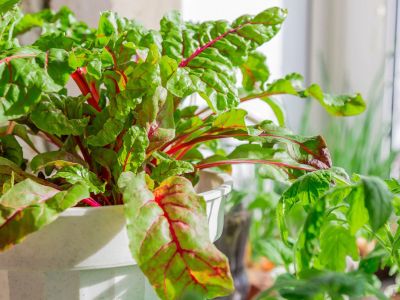Starting a Vegetable Garden Indoors
Starting a vegetable garden indoors is easy. At its most basic, all you need is a container for soil, light, and a way to keep the water off your floor. This last one is important – you don’t want to water all your new containers and find most of the water sinking into your floorboards. Buy inexpensive dishes to put under your pots to collect extra water. If you’re especially worried about your floor, put a tarp or piece of plastic under the dishes to catch drips and overflows. A common problem with vegetable gardening indoors is a lack of humidity – place some small stones in the dishes to keep that extra water from evaporating and give your plants some extra moisture. Indoor plants need lots of light. For some plants, a south-facing window is enough, but for many fruiting plants like tomatoes, you’ll probably have to supplement with artificial light. You can buy special grow lights, but compact fluorescent bulbs are also very good and efficient. Position your lights directly over your plants and attach them to a timer set to be on for at least 12 hours per day.
Best Vegetables to Grow Indoors
So what are the best vegetables to grow indoors? Herbs are always a popular choice since they stay small, usually don’t need as much light, and are useful for cooking in small amounts. If you want to grow root vegetables, you can’t go wrong with radishes, since they’re short and grow quickly. If you want to grow carrots, opt for a variety with a short and wide root. Bush peas and beans are great in containers, and vining tomatoes can be trained to climb up a wall or down from a basket or windowsill. If you have a particular vegetable in mind, though, try it! Part of the fun of indoor gardening is seeing what you can get away with.
